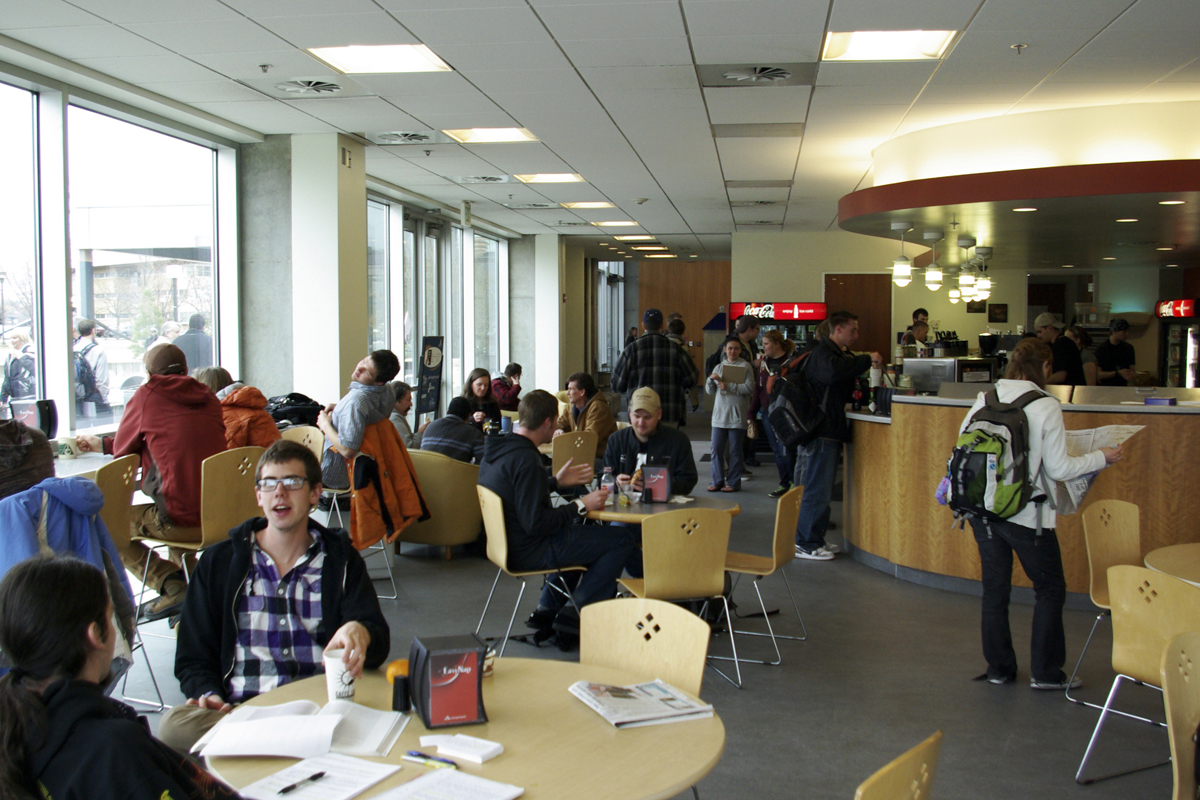Be Well aims to make Quadside customers aware of nutrition
USU’s Be Well program wants to help busy patrons of the Quadside Cafe make healthy choices by displaying nutritional information on flip charts, inspired by dessert or featured-item charts placed on tables at restaurants.
While the project is still in its beginning stages, Amber Schoenfeld, manager of the Quadside Cafe, said she is excited about being able to offer nutritional information to customers.
“It will be a great resource to have for our customers. We have a lot of questions about what is the better option, and it will be great to have the actual data on hand,” Schoenfeld said.
“It would be great to know just how many calories are in the food items we serve at USU,” said Caroline Shugart, director of the Be Well program and creator of the flip-chart project. “Other campuses around the nation are highlighting nutrition information for students so they can make wise eating choices.”
Allie Burnham, Katie Burk and Mckinsey Wilson, students in the dietetics program, are currently planning the project as volunteers. Before the flip charts can be made, the project needs to be approved by Alan Andersen, the director of Dining Services.
Burk said most people would like to eat healthily but they aren’t aware of the nutritional content of the food they eat.
“People genuinely don’t know. When you go to a restaurant – a fast food restaurant, a sit-down restaurant – you don’t know how many calories and how much fat is really in something,” Burk said.
Most restaurant diners underestimate the amount of sodium, fat and energy in calories contained in meals, according to a 2006 study in the American Journal of Public Health. Researchers said that, on average, participants estimated unhealthy restaurant meals to be 600 calories less than they really were, and that one meal of 600 extra calories a week could result in about nine extra pounds of body weight per year. Considering that diners also underestimate fat and sodium levels, ignorance of nutritional facts might contribute to significant health problems over time, the study states.
Burnham said making healthy eating choices can be easy, but customers often don’t realize healthier options are available, or how much of an improvement a healthier option is. The aim of the project is to make nutritional information more available and easy to understand, Burnham said.
“We want to promote (healthy eating) in a positive light,”Wilson said, “because we don’t want people to feel guilty about what they’re eating, but we’d like them to make those little changes in their diet, because it will make them feel so much better and it will improve their health.”
In addition to providing more ready access to nutritional information, the flip charts will also promote awareness of Be Well menu items already available upon request at the Quadside Cafe, Burnham said. Be Well items, which first appeared on campus menus in 2008, must have fewer than 600 calories, less than 30 percent fat and at least 6 grams of fiber. On the Quadside Cafe menu, asterisks beside certain menu items show that there is a Be Well version available, but the planned flip-charts will show how much of an improvement the Be Well version is in terms of calories and grams of fat.
Not only are Be Well meals better for your body, they are better for your wallet, Burk said. Be Well items are available at a 10 percent discount, and customers can use a punch-card to receive a free Be Well item for every 10 they purchase. The Be Well options are often only available on request, and many students aren’t aware they have a choice, Burk said.
Hopefully, the flip charts will be especially beneficial in a college environment, Burnham said.
“I think a big problem with college is that you want to find something quick, you want to find something cheap and you want to find something easy,” Burnham said.
With the flip charts in the Quadside Cafe, students will be able to make healthy choices and still satisfy those requirements, Burnham said.
While the project is still in its early stages, and no date has been set for the flip charts to appear, Shugart said the sooner the project is finished, the better. If the flip charts are a success at the Quadside Cafe, they may be making appearances at other dining locations on campus such as the TSC’s Marketplace, Burnham said.
– steve.kent@aggiemail.usu.edu

